
6 minute read
The history of Draycote Water SC and of its Flying Fifteen fleet
Sir Charles Barratt was Town Clerk of Coventry and was a major force in the rebuilding of the city after the Second World War, for which he was knighted. He was a leading force in giving Coventry a university, the University of Warwick which opened in 1965. He was also closely involved with the Coventry School of Music and the Sir Charles Barratt Memorial Foundation still helps fund the studies of young musicians.
The Nathan Silver Salvers
Advertisement
The single most important event in the Draycote sailing calendar, and which probably did more than any other in establishing the Club’s national reputation, was the annual Nathan Silver Salvers which started in 1975 and continued till 1999. Other sponsors, including Severn Trent, Laser and AutoCIM, took over from Nathans, a Birmingham jewellers, after 1985, after which it became known as the Draycote Silver Salver.
Each class association around the country was invited to send two of its top competitors to the race, a 200-minute pursuit, with Draycote also able to enter two from each of its home classes. There were consistently more than 120 boats sailing, the highest number, 160, recorded in 1998, when entry was opened to four boats from each class.
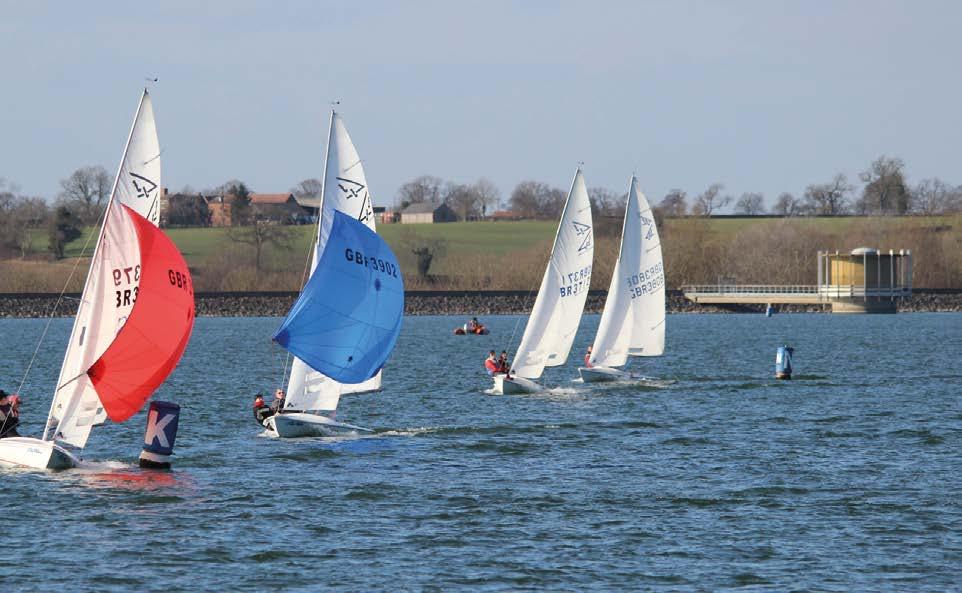
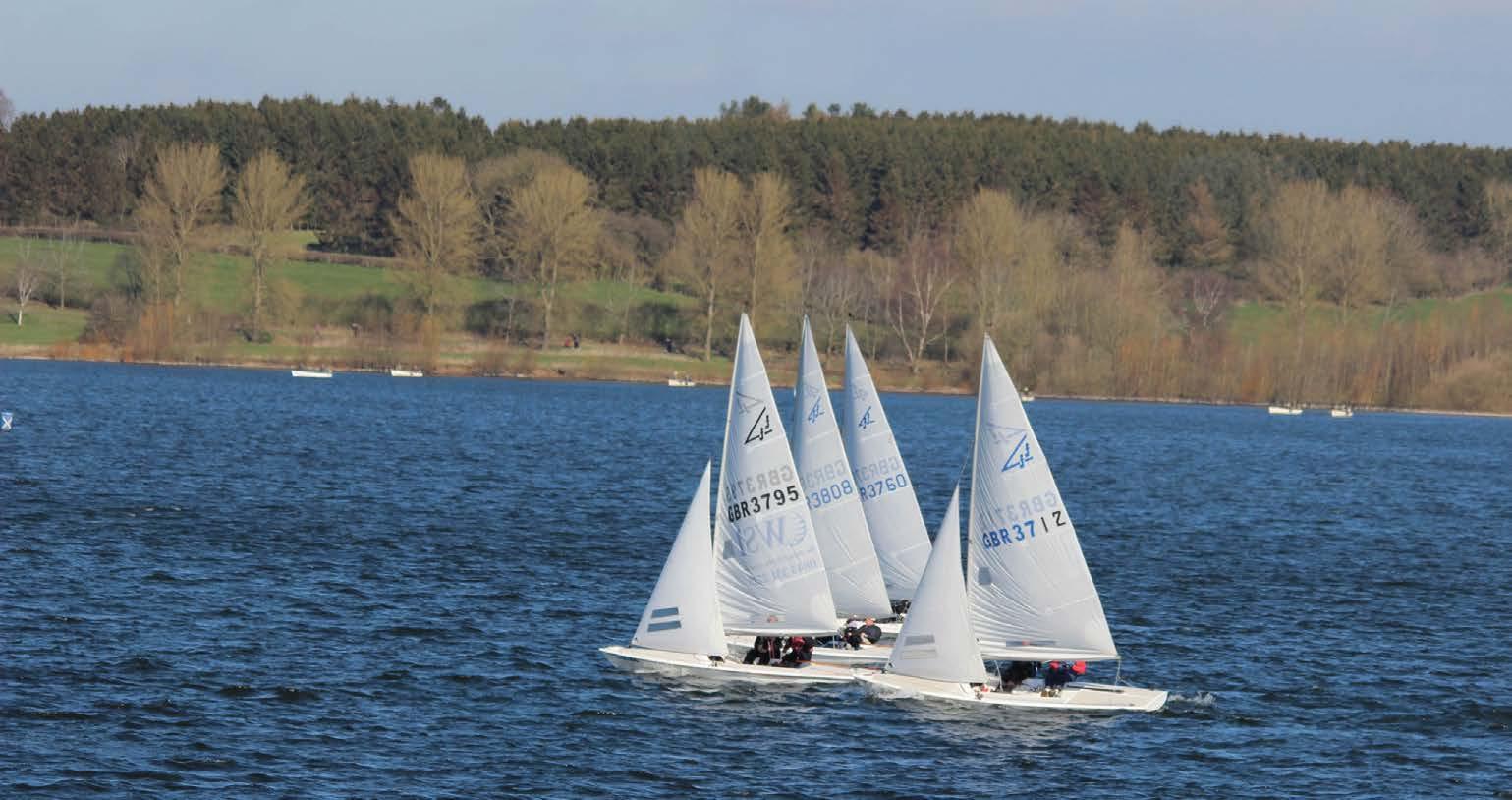
Regularly as many as 30 National champions, as well as World and European champions and at least one Olympic silver medallist (Keith Musto in the Flying Dutchman) took part. It became a major spectator sport locally as well, with up to 700 spectators gathering on the banks.
Winning boats came from a wide range of classes over the years, including 420, 470, Flying Dutchman, International Moth, International 14, 505, Fireball and even Toppers(twice). Winners received a Rolex Oyster watch!
The Flying Fifteens at Draycote
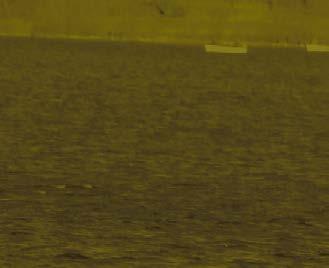
Currently the Flying Fifteen fleet can boast amongst its members past World and National champions, with several crews currently competing at National and International level with a considerable degree of success.
The growth and enduring nature of the fleet can be, in part, attributed to dry berthing on a concrete hard and easy launching and recovery against a floating pontoon which is easily moved to accommodate changes in water level. But this has not always been the case.
Early Days
The only concrete slipway at DWSC that can accommodate the needs of a Fifteen belongs to the Water Authority, the Clubs landlord, and is outside but on the edge of the Clubs grounds.
This slipway has a gentle gradient and is long enough to allow launching and recovery at any water level and is conveniently situated at the most sheltered corner of the reservoir. In the early years of the Club a group of potential Fifteen owners, through the club committee, approached the landlord for permission to use this slipway which was granted but for limited use. The slip could only be used to access moorings which had to be provided by the Club. Moorings were laid and the DWSC Flying Fifteen fleet came into being.
The first Fifteens at DWSC had sail numbers in the 1400s, “Flamenco Magic” 1446” springs to mind, and by the mid-1970s sail numbers at DWSC were in the 1800s with a number of Wyche and Coppocks being bought, one of which being 1848 “Shaft”. Shafts owner had a wry sense of humour naming the dinghy in which he rowed out to the moorings “Half Shaft”. A few short comings of being on moorings soon became evident, one of which was that boats soon had to be anti-fouled which in turn impacted on performance. Another was lack of adequate buoyancy. What was a sheltered mooring in the prevailing south westerlies in those days became anything but, in a strong northerly wind. After a gale, owners often arrived at the club to find boats barely afloat with not enough freeboard to board them without water coming in over the deck faster than it could be bailed out. Boats had to be bailed out from a dinghy alongside. Inadequate buoyancy was also a problem after a knock down while racing and “Shaft” was once recovered by a safety boat with only the bow above water.
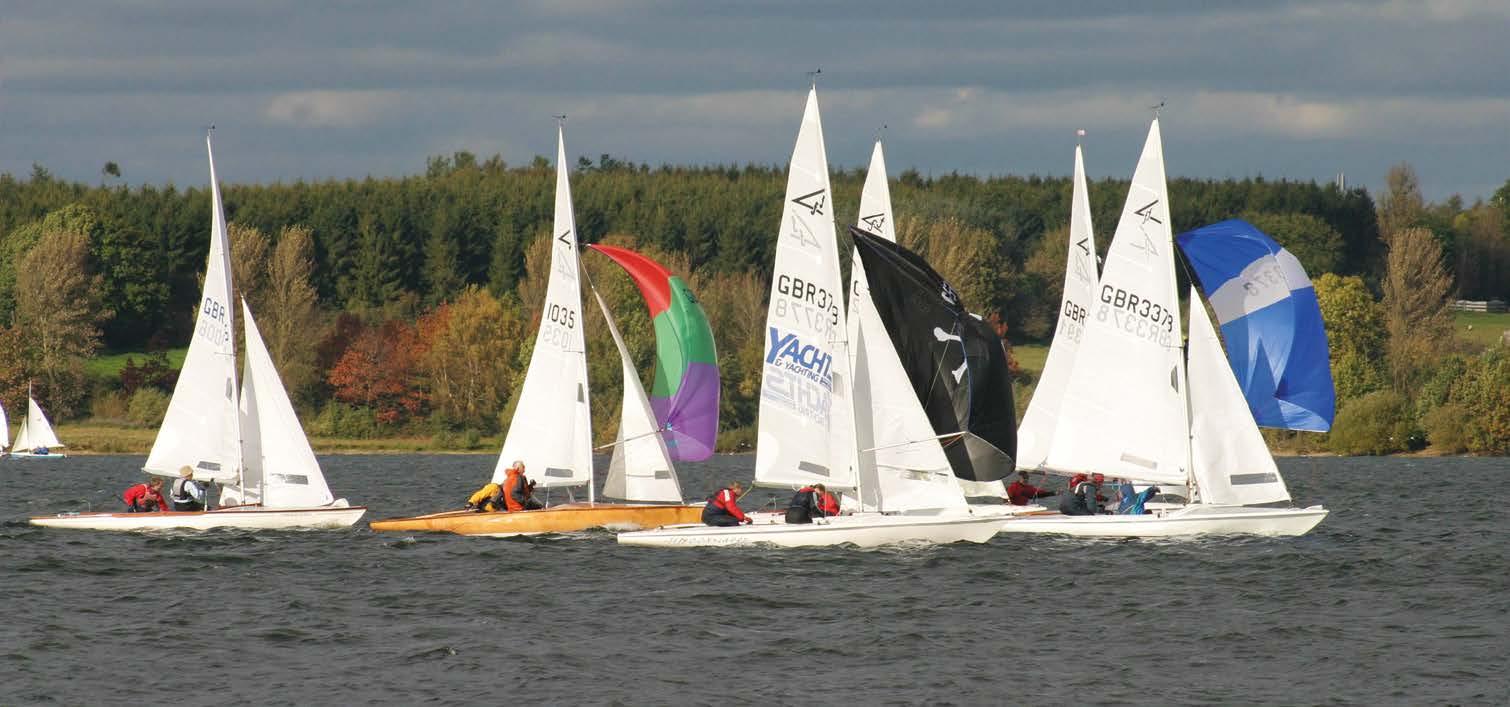
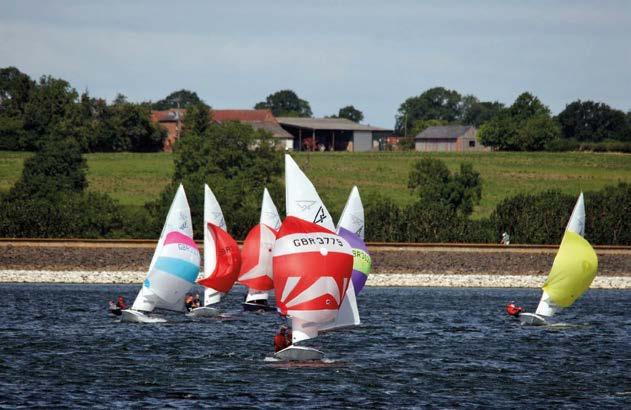
By the late 1970s the problems associated with being on moorings, antifouling and swamping encouraged an approach to the landlord who gave permission for the Water Authority slip to be used by the Flying Fifteens on a regular basis. Concrete hards were laid, boats were dry berthed and wet launched. This brought a new surge of enthusiasm in the fleet and boats were stripped of their anti-fouling, polished, upgraded or changed in the pursuit of better club and open meeting results. “Big Broffer”, sail number 1984 hit the water followed by “Blue Broffer”, sail number 2448 two years later. However, these were to be the last new Wyche and Coppocks bought by a club member.
During the early 1980s the fleet members added to the concrete hards, widened the Water Board slip within the club boundary and built a fixed pier from scaffolding and scaffold planks. This pier provided for dry launching and recovery but could become high and dry during lower water levels. With this more comfortable arrangement the first Windebank IV, sail number 2744 was bought by a fleet member, followed by another member buying the first Amos, sail number 2922, and then a third buying a Windebank V 3083, which prompted a renewed surge for a winning performance.
In 1984 a core of club members from the GP14 fleet transferred to the Flying Fifteens and several Wyche and Coppocks, 1984,1847and 1903 and a Vectis Marine, 1446, were resurrected by them. It was inevitable that these venerable Fifteens were not going to get anywhere near the Windebank’s and Amos boats and after some of the races dark mutterings were heard of burning boats on the slipway.
With the growing fleet the concrete hards were extended and improved and the fixed pier was dismantled to be replaced by a floating pontoon that was a DIY project and fabricated by a fleet member. This pontoon could be moved in and out following a changing water level. Made from several short narrow sections, constructed from angle iron with buoyancy provide by empty oil drums it was very twitchy in rough weather and demanded considerable balancing skills from those using it.
The ex-GP group persevered but over the next couple of years either bought later and quicker boats from other fleet members as they upgraded to the latest Ovington IX or bought a new boat. By 1989/90 the competitive fleet consisted almost wholly of Windebank IVs, Vs, IXs and Xs, Amos Fifteens based on the Windebank mould and a few Ovington IXs. Of the Ovington IXs 3292 was setting the pace at the club. The Wyche and Coppocks had had their day at the club, either being retired or relegated to cruising.
The 1990s onwards
The Ovington IX and IX “smoothy” reigned supreme at the club during the 1990s and fleet members were making their mark internationally and nationally. Funny Face, 3292, won the Worlds in 1992 and in 1997 the same owner sailing 3573 came 2nd in the Worlds, 1st in the Southern Championships and 2nd in the Inlands. The year before in 1996 year another DWSC crew in 3564 came 3rd in both the nationals and Northerns. Such was the level of competition at the club during this period these crews did not have it all their own way.
During the early 2000s the fleet replaced the twitchy homebuilt pontoon with a professionally built one which is substantial, stable and easily moved. The Club Committee negotiated the use of the Water Boards slipway to be written into a renewed Club lease, so its use was no longer a grace and favour arrangement thus providing the Fifteen fleet with greater confidence. The first Ovington X made its appearance at the club during 2002 and promptly set a new standard in performance which caused other fleet members to reach for their wallets or arrange a meeting with the bank manager. That first Ovington X, 3760, still proves to be virtually unbeatable with a string of international and national successes. The helm and crew (Jeremy Davy and Martin Huett) might have something to do with it!
The Flying Fifteen fleet moves into 2020 having played a substantial part of the Clubs 50 years promoting the Clubs name in the UK, Europe and World competition. Although the active fleet cannot match the numbers competing in club racing during the heady days of the 1980s and 90s there are eight Ovington Xs, a couple of Ovington IX smoothies and a Benedict to be seen on the start line and a new Ovington X being fitted out for the new 2020 season.
Members are already planning to attend many of the Association Championship events and there will be a contingent of 5 going to Morgat in France for the 202 European Championships.
If you live in the Midlands and your club does not sail in the winter, Draycote Water offers Winter Membership from November to end of March. There is fleet racing at 11am and 1:15pm every Sunday.

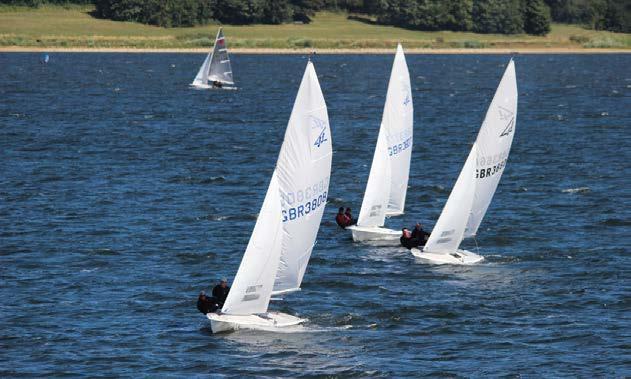

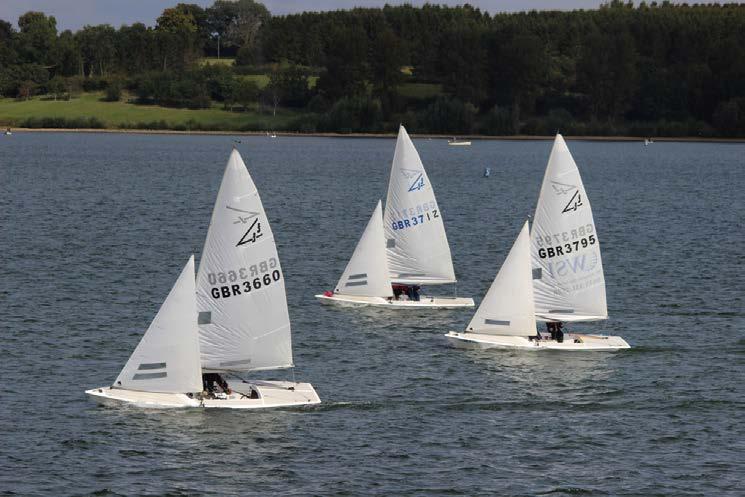
Why not come and join us for some competitive racing and keep your team in top form ready for the new sailing season in 2021!
Written by Harry Sayers, and contributions from Simon Thompson (GBR407?),
with early history from the club website.
www.draycotewater.co.uk








